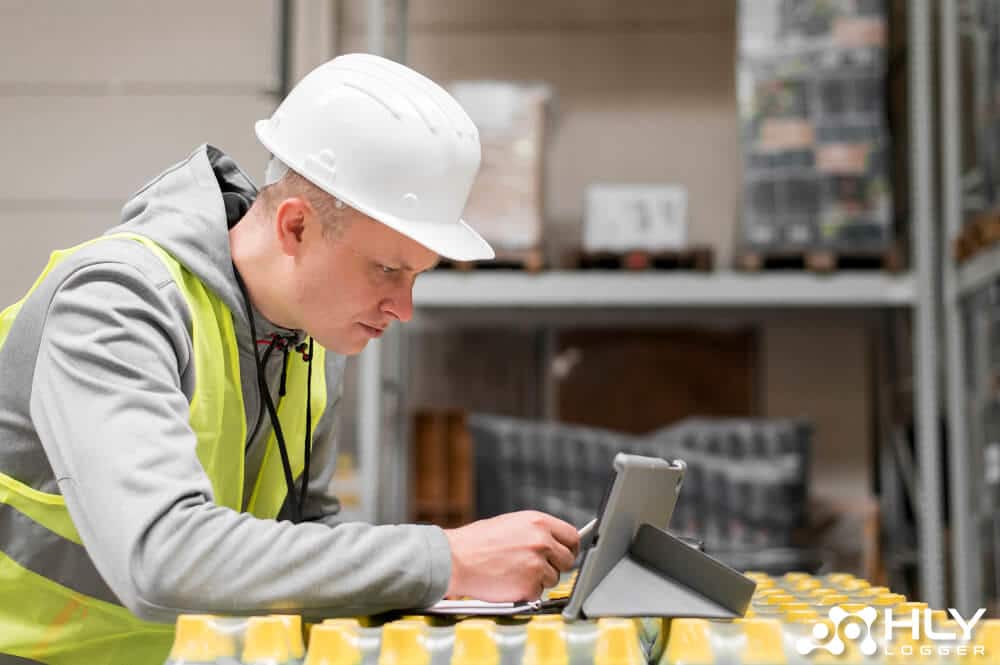Real-time temperature monitoring refers to the continuous tracking of temperature in a particular environment or system. There are various methods to do this including the use of sensors, wireless technology, and software platforms. There will be data collection then data analysis and visualization. Many systems also automate for adjustments.
The applications of real-time temperature monitoring are very broad. Industrial monitoring requires temperature sensors to monitor equipment and environmental conditions. Factories must provide them to prevent overheating or malfunctions. Then the HVAC system in homes or office buildings also implements real-time temperature monitoring to ensure optimal heating, ventilation, and air conditioning in the building.
Meanwhile, those who provide food and beverage products really need a place (freezer or refrigerator) for storage with proper temperature monitoring. This is to ensure food safety to avoid bacteria that cause contamination and damage the product.
Another very significant application occurs in the pharmaceutical business where medical devices and the storage environment require ideal temperatures so that the quality of the drugs remains good until they reach the end user. In addition, in environmental monitoring work, temperature monitoring can track weather patterns, climate change, or natural events such as forest fires.
Contents
Supporting Technology for Real-Time Temperature Monitoring
Real-time temperature monitoring systems can be vital to maintaining safety, increasing efficiency, and ensuring regulatory compliance in various industries. There are a number of technologies that support the success of production, storage, packaging and distribution of products that are quite sensitive to temperature changes.
The following supporting technologies are very good at maintaining the quality of temperature monitoring:
Temperature Sensor
The temperature sensor in a real-time temperature monitoring system is very useful in measuring the temperature of the environment or object continuously and sending data directly to the monitoring system or other devices for monitoring. By using a temperature sensor and real-time monitoring system, users can ensure efficient temperature control, prevent damage, and take preventive measures more quickly.
Some types of temperature sensors that often support real-time temperature monitoring systems include thermistors, RTDs, thermocouples, digital temperature sensors and infrared temperature sensors.
Those who use thermistors see that this semiconductor sensor is quite sensitive to temperature changes and is relatively inexpensive. Its resistance changes with temperature changes.
Then RTD (Resistive Temperature Detector) becomes a temperature sensor that uses a metal resistive element whose resistance increases linearly with temperature. This sensor has high accuracy and good stability so that its price is more expensive than thermistor.
Next, thermocouple is a temperature sensor that uses two different metals that meet at one point. When the temperature changes, a small voltage appears at the metal joint. The response is very fast so it is good for high temperature use.
Another technology is a digital temperature sensor that outputs in the form of a digital signal. This sensor is accurate, user friendly, and can transmit temperature data directly.
Then, there is an infrared temperature sensor that can measure infrared radiation from an object to determine the temperature without direct contact. This is perfect for measuring the temperature of moving objects or objects that are difficult to reach.
Monitoring Platform
Another technology that supports real-time temperature monitoring is a monitoring platform with an IoT-based solution. Internet of Things (IoT) devices with Wi-Fi or Bluetooth capabilities, allow real-time temperature data to reach the cloud platform or local device.
Then the temperature sensor will be integrated with a mobile application to monitor data on the go.
Real-Time Data Analysis and Connectivity
Technology in real-time temperature monitoring can also provide warnings and notifications using an automatic system that can send warnings when the temperature exceeds or falls below the limit.
Then there is data recording and visualization by providing historical trends and real-time graphical displays to facilitate analysis and decision making. Meanwhile, for connectivity, it still uses Wi-Fi/Bluetooth which allows real-time data transfer to a centralized system. Next, there is LoRaWAN which is a low-power long-range communication technology suitable for large-scale monitoring settings. Finally,
Cloud-Based System that allows remote access and analysis of temperature data anywhere in the world.
How Real-Time Temperature Monitoring Works
In a real-time temperature monitoring system, the temperature sensor sends measured temperature data to a data processing system or device, such as a microcontroller, computer, or cloud-based platform. A microcontroller connected to the temperature sensor continuously reads the data and sends it to the monitoring application.
This temperature data is then doing monitoring and analyzing in real time for various applications, such as automatic temperature control systems (e.g., HVAC or industrial equipment), monitoring the temperature of electronic devices, tracking environmental conditions (e.g., server rooms or greenhouses), and health applications for monitoring body temperature.
HLY Technology Co., Ltd. Which is a data logger manufacturer that has been developing innovations in real-time temperature monitoring systems since 2011, offers advanced temperature monitoring solutions through our reliable data logger products. Our M371 3G and M381 4G Real-Time Disposable Temperature and Humidity Data Loggers feature high-performance digital sensors that provide accurate and stable readings. These products are ready for use with no need for parameter settings.
They offer global connectivity with full-band 3G or 4G communication modules and provide enhanced functionality with easy data export via local storage. Even in areas with poor signal reception, our products maintain a continuous data chain. Complete your device with our innovative products today.

